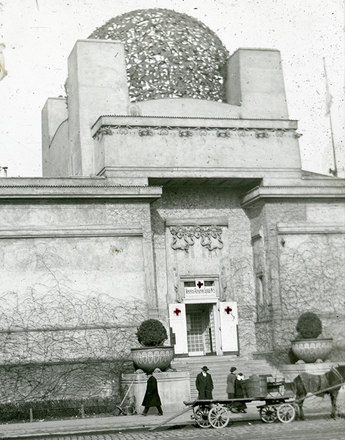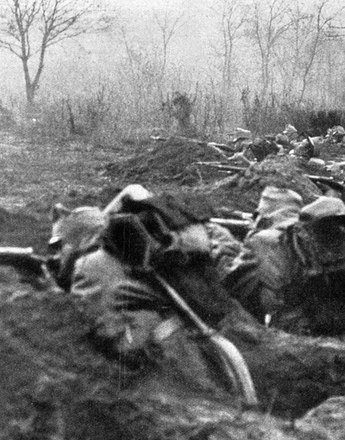Organized propaganda: the film department of the War Press Office
The First World War intensified the use and acceptance of new propaganda media. The war effort was encouraged at all levels. The organization of film propaganda in Austria-Hungary was the responsibility from 1914 of the film department of the War Press Office.
‘The importance of the cinema is growing from year to year. The number of cinemas is increasing and they have larger capacities. The financial situation of large sections of the population means that more and more people can visit the cinema. A good film today is shown in over 3,000 cinemas and seen by 10,000 to 12,000 people. From this it is evident that film may be regarded as superior to any other propaganda medium. No other medium than film enables the state to reach the broad masses.’
This statement by Colonel Wilhelm Eisner-Bubna, head of the War Press Office from March 1917, clearly indicated the significance of film as a propaganda medium. Cinema visits had become ‘a public habit’ and had inestimable ‘information and instruction possibilities’ that should be controlled through the setting up of a film department in a ‘military, national and patriotic sense’.
The film department was duly set up within the War Press Office in 1914. Its tasks included the recruitment of film units made up of enlisted cinema specialists, who would shoot films at the front, at headquarters and behind the lines. A cinematographic laboratory was also set up in the department, and all films were subject to censorship.
Qualified and experienced domestic production companies were required to process the desired films. Contracts were ultimately concluded with Sascha-Filmfabrik and Österreichisch-ungarische Kinoindustriegesellschaft. Two companies from Budapest were also recruited. The department was headed from November 1915 by Alexander Kolowrat-Krakowsky, and in 1917 he was replaced by the equally experienced Captain Hans Otto Löwenstein.
The film department had the task of taking making the following propaganda films: 1. a weekly war newsreel, 2. at least one major war film per month, 3. at least one 300–400 m war film per month showing the work in a prisoner-of-war camp or occupied territory, 4. films of the war industry and agriculture, 5. propaganda dramas or feature films.
The propaganda films were shown during the regular cinema operation, in vaudeville and entertainment locales on the home front, in cinemas, in neutral and allied foreign countries by means of mobile cinemas and in specially erected field cinemas ‘to distract and refresh the spirit of the troops’ (An Austro-Hungarian field cinema during the First World War, A 1917).
Translation: Nick Somers
Mayer, Klaus: Die Organisation des Kriegspressequartiers beim k. u. k. AOK im Ersten Weltkrieg 1914–1918, Diss., Wien 1963
Schmölzer, Hildegund: Die Propaganda des Kriegspressequartiers im Ersten Weltkrieg 1914–1918, Diss., Wien 1965
-
Chapters
- Film censorship – regulating what was shown
- The Saturn censorship affair
- Combatting ‘dirt and trash’
- Serving the public – the film and cinema industry before and during the First World War
- Organized propaganda: the film department of the War Press Office
- Focuses and aims of war film propaganda
- After the war – the National Film Headquarters: managing the past, warning about the present, and promoting new ideas







